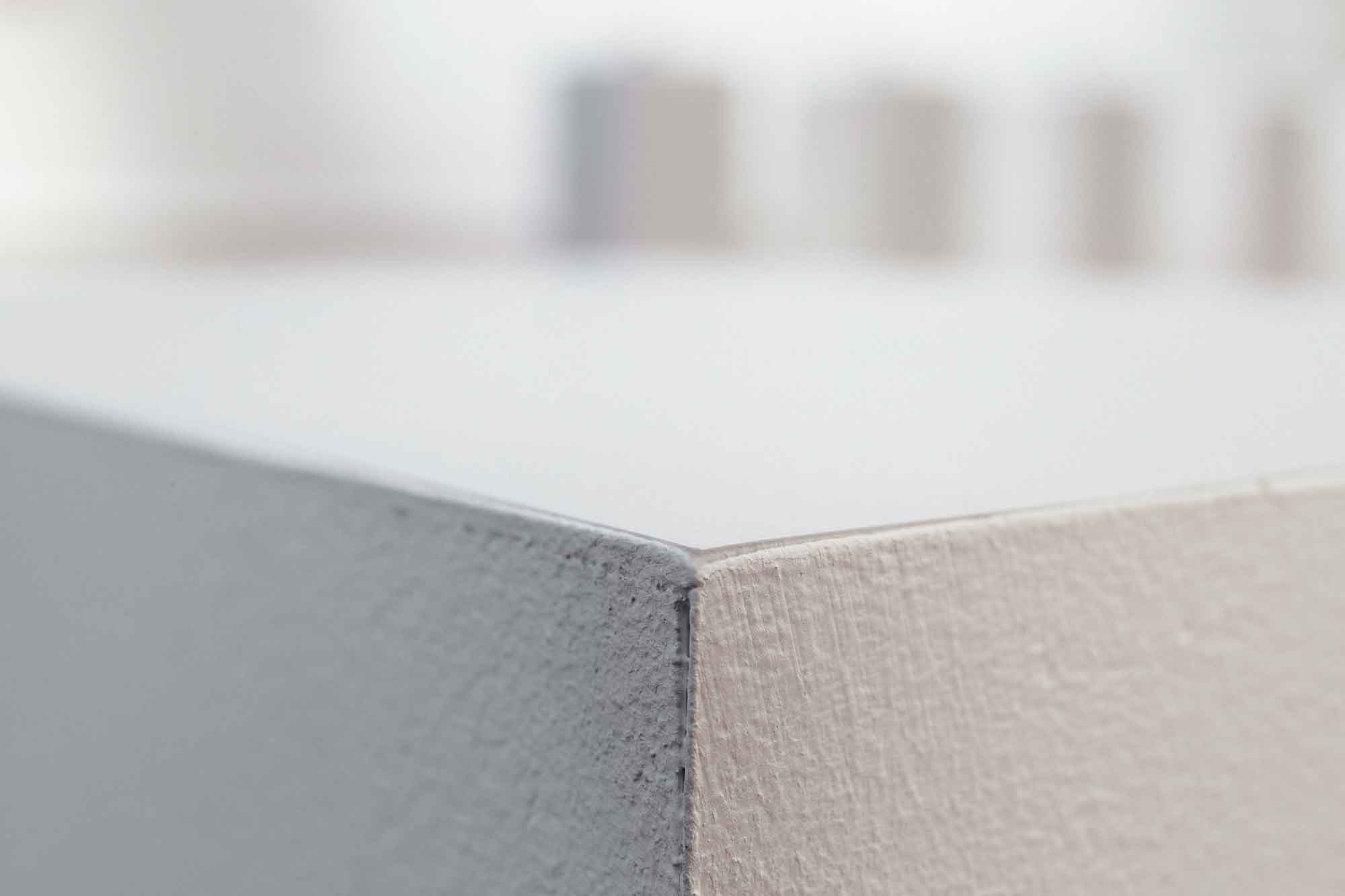
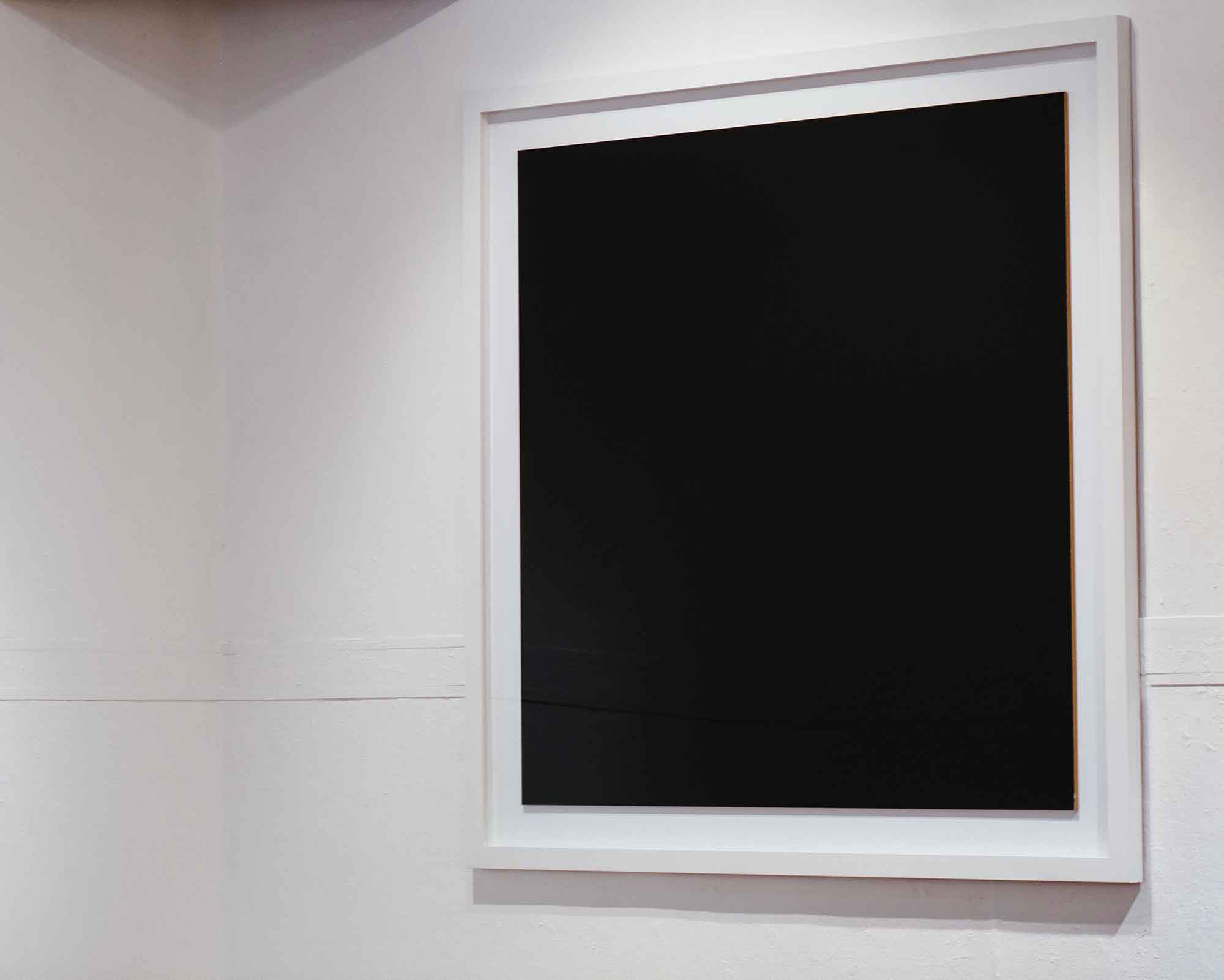
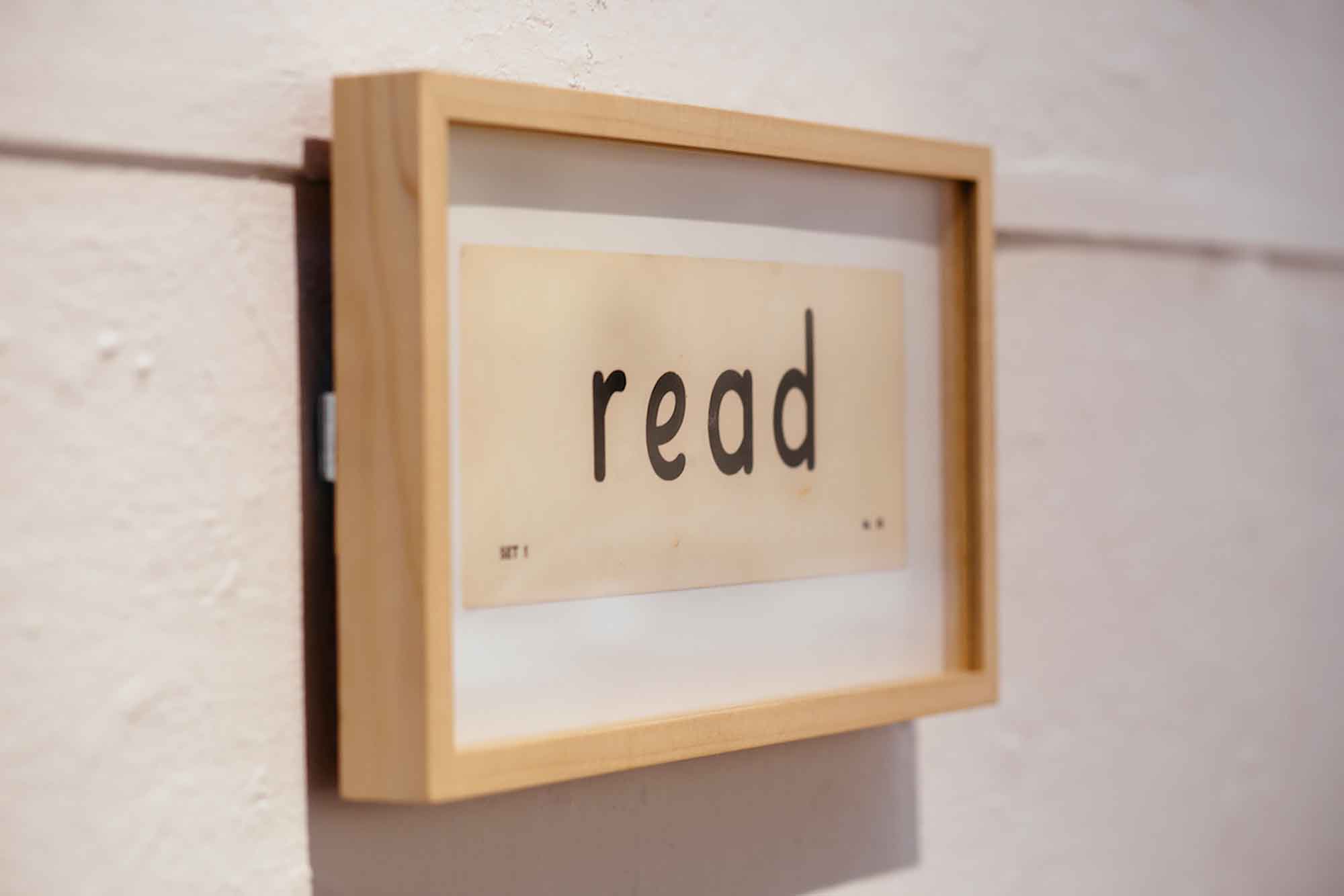
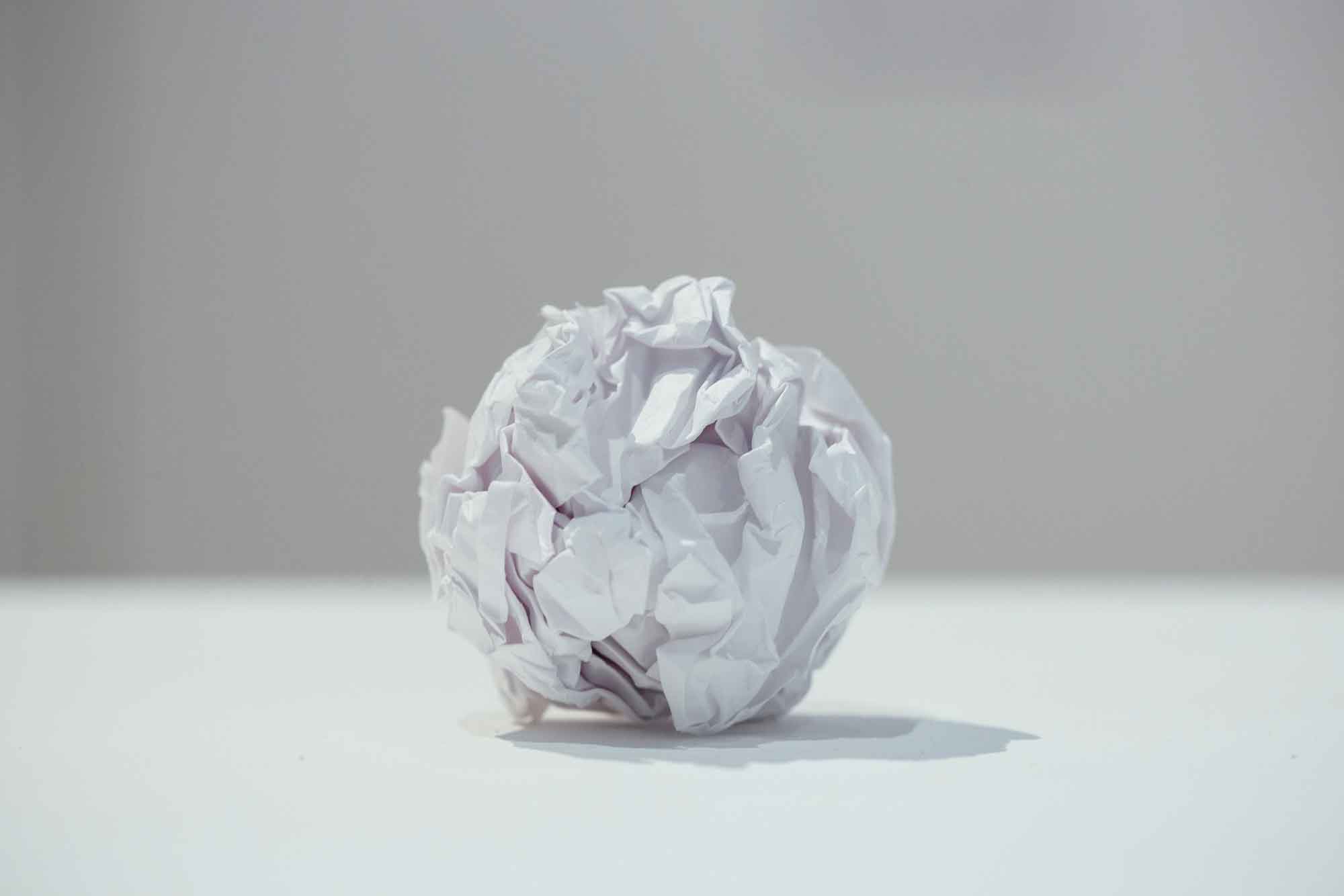
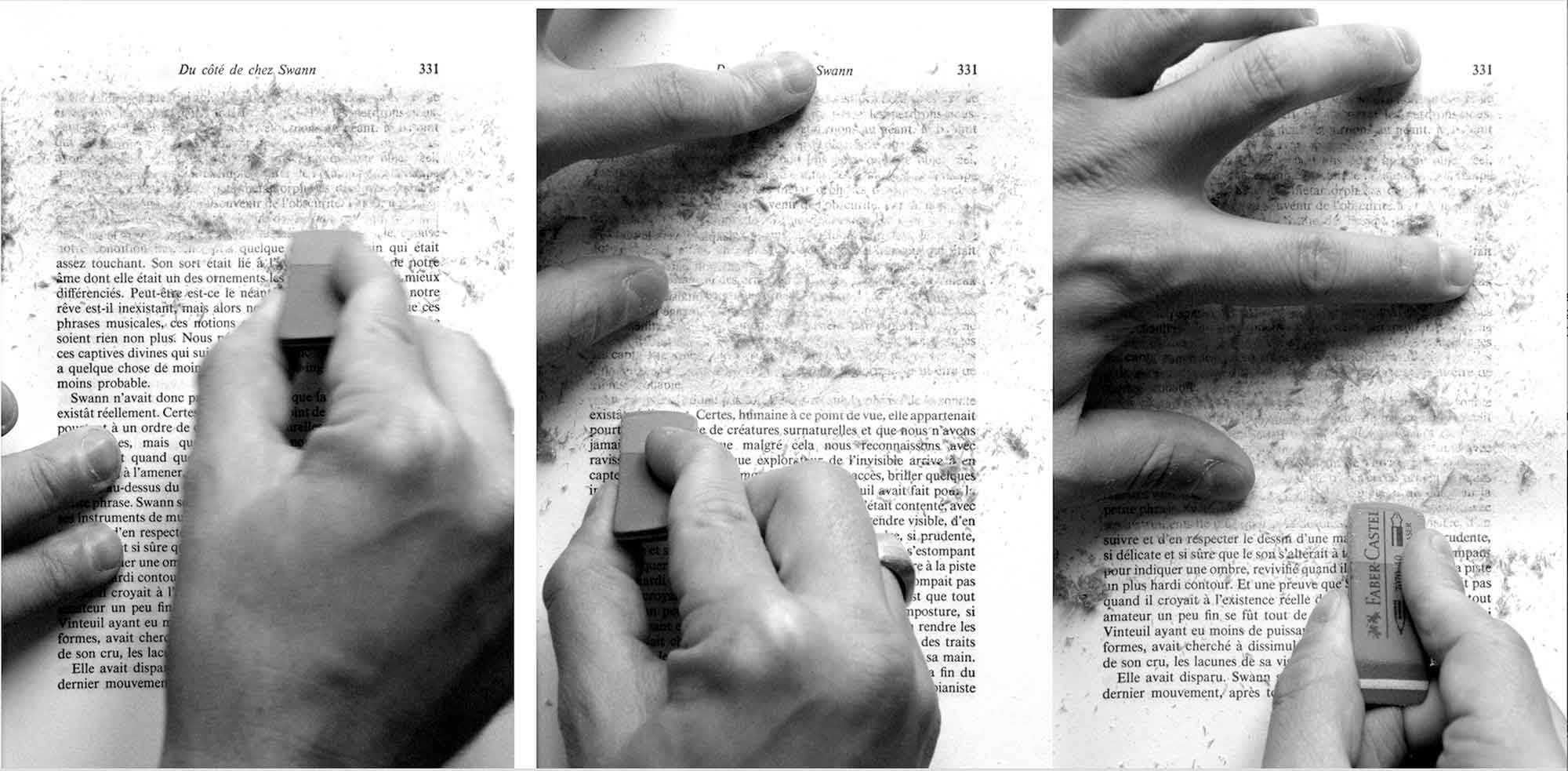
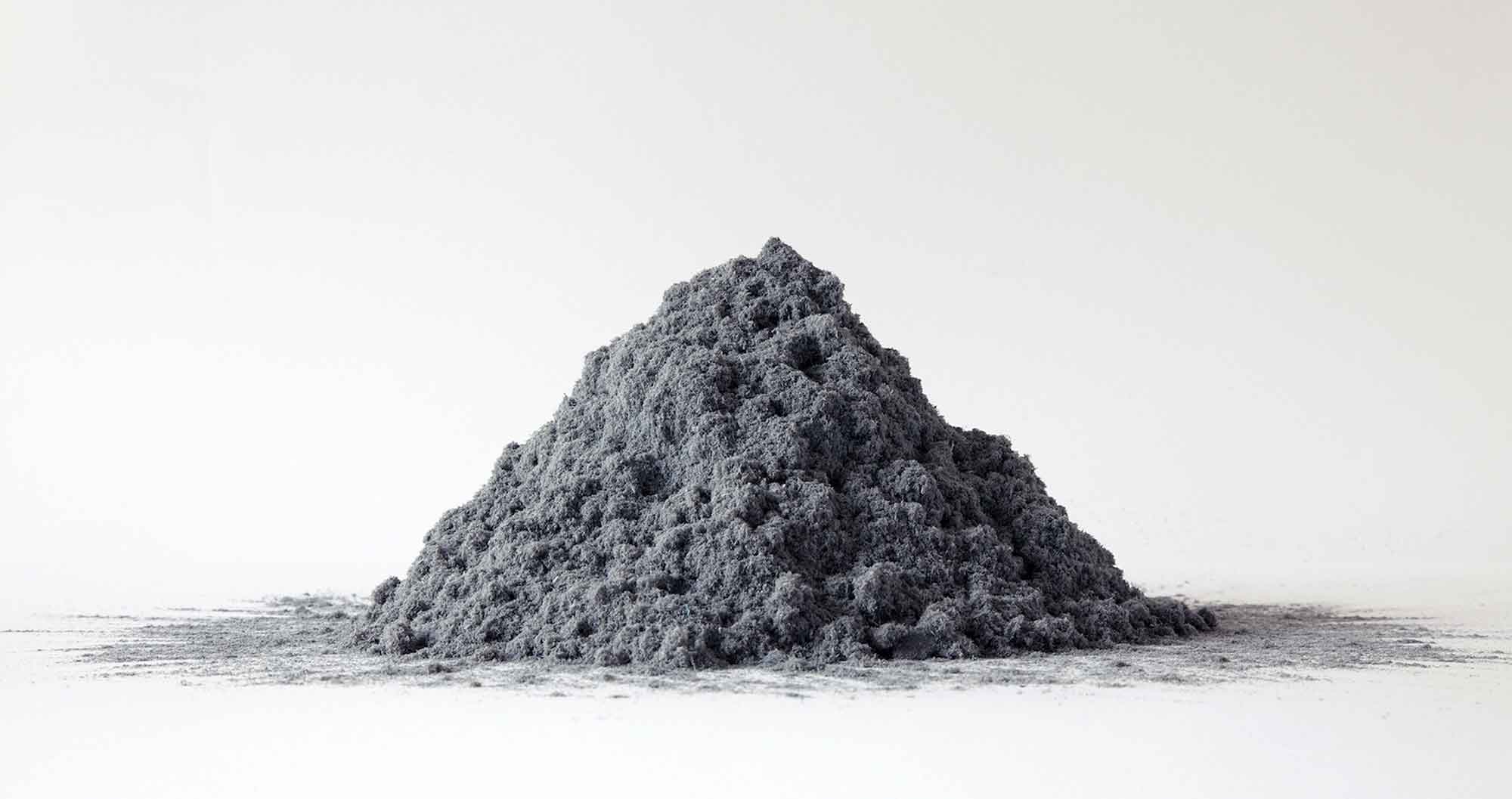
‘If they give you ruled paper, write the other way.’ – Juan Ramón Jiménez is quoted by Ray Bradbury in the epigraph of his book Fahrenheit 451 (2004).
(as curator)
The exhibition Reading as Art at Bury Art Museum and Sculpture Centre (27 August-19 November 2016) explored the potential of the act of reading as art. The works included in the exhibition find different means to foreground and investigate the activity of reading: the forms it can take (silent reading, reading aloud, spontaneous reading, purposeful reading, and so on), the matter of reading (the book, the screen, the space of the page), the bodies that engage in it and the contexts in which it occurs. All of the works are concerned to make reading manifest in some way; in so doing, they each show – differently – how reading is its own form of making.
Simon Morris (b. 1968) is a conceptual writer and teacher. He is Professor of Art and Director of Research in the School of Art, Architecture and Design at Leeds Beckett University, UK. His work appears in the form of exhibitions, publications, installations, films, actions and texts which all revolve around the form of the book and often involve collaborations with people from the fields of art, creative technology, literature and psychoanalysis. In 2002, he founded information as material (iam) which operates as a collective of writer-editors and as an independent imprint that publishes work by artists who use extant material — selecting it and reframing it to generate new meanings — and who, in doing so, disrupt the existing order of things. To date, they have published over fifty books by artists and poets across the globe.
He is the author of numerous experimental books, including; Bibliomania (1998); The Royal Road to the Unconscious (2003); Re-Writing Freud (2005); Getting Inside Jack Kerouac’s Head (2010); and Pigeon Reader (2012). He is an occasional curator and a regular lecturer on contemporary art and also directed the documentary films sucking on words: Kenneth Goldsmith (2007) and making nothing happen: Pavel Büchler (2010). His most recent publication (as editor) is Reading as Art (2016) which accompanies the exhibition he curated of the same name at Bury Art Museum & Sculpture Centre. He has had solo shows at the Freud Museum in London and Printed Matter Inc., New York City. He regularly gives talks on his work and was recently invited to speak at: ETH Zurich, Switzerland; The Royal Academy in the Hague, Holland; Warsaw Museum of Modern Art in Warsaw, Poland; the Kelly Writer’s House at the University of Pennsylvania; USA, Cabinet Gallery in Brooklyn, New York City, USA, Harvard University, Boston, USA and the Literaturwerkstatt in Berlin, Germany. He has variously been described as ‘philosophically irresponsible’ (Revue d’esthétique, Paris, France), ‘a literary pervert’ (Whitechapel Gallery, London), ‘mischievous’ (Times Literary Supplement) and ‘an inspired lunatic’ (The Guardian).
Collaboration is a key methodology for me. I often quote my favourite teacher, Professor Jane Rendell who said: ‘I discover parts of myself in my encounters with others’ – Jane Rendell, ‘Travelling the Distance/Encountering the Other’, David Blamey (ed.) Here, There, Elsewhere: Dialogues on Location and Mobility, (London: Open Editions, 2002) pp. 43-54, pp. 53-54. My other favourite comment on collaboration is by the American artist Mark Dion who said:
One great thing about collaboration is that it’s like taking a vacation from yourself, if you’re honest about it. I have a way of doing things and other artists have their way of doing things, and I learn a lot from that. Sometimes methods are very contradictory and it has to be their way or my way. It can be a struggle, things turn out differently. If I design a collaboration and it comes out exactly the way I thought, then it wasn’t a productive collaboration. If it looks nothing like how I imagined it would look, then it is really successful. The best test for me, personally, is how much the idea evolves with the influence of another person. My collaborators have always been strong personalities with definite positions, and so, while it is always rewarding, it is not always easy. Some collaborations are also simply good excuses to travel and spend productive time with friends. We enjoy working together even if it is a challenge.
Mark Dion in conversation with Zina Davis and Chris Horton, Collaborations: Mark Dion (Hartford CT: Joseloff Gallery, Hartford Art School, 2003) pp. 3-4. Over a number of years I have regularly contributed to Professor Jane Rendell’s MA Situated Practices Module: Critical Spatial Practice: Site-Writing delivering lectures and leading workshops and seminars. It has always been a real privilege to work with Jane and her colleague, Dr Polly Gould and a wonderful experience to spend time at the Bartlett School of Architecture. The students are very intelligent, receptive, generous, international and highly motivated. It has been a real pleasure to work with them.
Craig Dworkin, No Medium (Cambridge, Massachusetts: MIT Press, 2013).
Craig Dworkin, Reading the Illegible (Illinois: Northwestern University Press, 2003:
Georges Perec, Species of Spaces and Other Pieces. trans. John Sturrock (London: Penguin Books, 1997).






































































